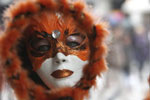Government and Policy
China bans two food additives in flour
Updated: 2011-03-01 21:20
(Xinhua)
BEIJING - Chinese authorities have banned the production of two food additives commonly used to "bleach" flour, said the Ministry of Health Tuesday.
The two additives, benzoyl peroxide and calcium peroxide, were banned because "there is no need to use them in flour processing anymore" as the country's processing techniques and wheat planting had improved, the ministry said in a statement on its website.
| ||||
Manufacturers are no longer allowed to produce the two food additives or use them in flour production beginning May 1, 2011. However, flour and related products were allowed to be sold until the shelf life of such products expires.
On December 15 last year, the ministry began soliciting public opinions on whether to continue using these food additives in flour, amid concerns that China's current food processing techniques cannot mix the additive evenly and excessive use of the additive might become "a hidden peril".
Consumers have almost unanimously agreed to stop using the additives, while the views of flour producers and additive manufacturers were in favor of continuing its use, according to the statement.
Under current Chinese food additive regulations, the maximum volume of benzoyl peroxide used in one kilogram of flour is 0.06 grams. Regulations vary elsewhere in the United States, Canada, and Japan. The European Union has banned the use of benzoyl peroxide in food.
The Codex Alimentarius Commission, an organization created in 1963 by the United Nations Food and Agricultural Organization (FAO) and the World Health Organization (WHO) to develop food standards and guidelines, stipulate the maximum content of benzoyl peroxide used in one kilogram of flour shall not exceed 0.075 grams.
Specials

Self-made aircraft
An automobile mechanic in Northeast China made a test flight of his self-made aircraft which cost about US$395.

Venetian Carnival
Masked revellers celebrate in Saint Mark's Square in Venice.

Olympic mascots
Organizers made the unusual decision to have three mascots for the 2014 Olympic Winter Games.



